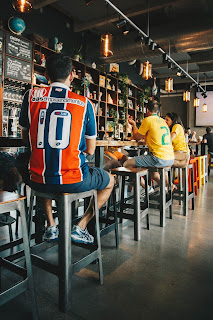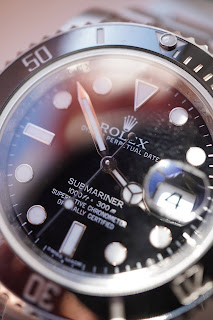Rules you should follow while decorating a soccer jersey
Soccer uniforms have a lot to say about the squad; solidarity, team spirit, and the ability to win the game. But make sure you know the rules before designing or decorating your soccer uniform this season. And the rules may differ from one company to another, so make sure you know what the rules are for your team. Then step forward to make your jersey. There are many jersey sellers who can provide you with a custom jersey. For example, Lusoccer is an online platform where you can make your custom soccer jersey by following your team rule. Now let’s discuss the rules you should follow while decorating your soccer jersey.
Uniform Rules in High School Soccer
The following is a general guideline for high school soccer uniforms but is not official. Please consult with your local school or association about the rules that apply to your team, as the rules can differ.
The fundamentals:
The requisite high school soccer uniform includes shirts, shorts, socks, suitable shoes, and shin guards of age and size that are suitable and provide sufficient protection.
The socks and jerseys of the competing teams must be of different colors. The home team can make the requisite changes if the two teams are wearing similar colors. The home jersey is expected to be light-colored, the opposing team wearing dark. New to the 2012 fall season, the home team will wear solid white jerseys and white socks, and the visiting team will wear dark underwear.
Shin Guards:
Shin guards are to be worn under socks, and the bottom edge is no higher than 2 inches above the foot. Shin guards must comply with the requirements of the NOCSAE (National Operating Committee for Athletic Equipment Standards). Underwear must be the same color and length as overwear.
Numbers, signs, trademarks:
The number size on the front of the jersey should be at least 4 inches wide, and 6 inches on the back. On a high school uniform, only symbols representing the school (with potential exceptions) and the name of the player are allowed. The logo or trademark of the manufacturer can appear on socks with limitations. Just one manufacturer's logo or trademark may appear on the exterior of each piece of clothing and may not exceed 2-1/4 square inches. The American flag shall not exceed 2 x 3 inches. A remembrance or remembrance patch should not exceed 4 square inches and may be worn on a jersey if the sign does not interfere with the visibility of the number.
Accessories, Castes, and Braces:
Soft caps and padded headbands are allowed. Things such as casts, braces, etc. worn on the body must be padded to ensure protection, with padding not less than 1/2 inch thick. Artificial limbs that are not deemed to be harmful and which do not place other players at a disadvantage are acceptable. Any protruding sections must be padded with foam.
Uniform Rules in College Soccer
The following are the rules and explanations of the NCAA Soccer 2008 and 2009.
The Simple:
The traditional college soccer uniform shall consist of jerseys or shirts, shorts, shoes, shin guards and stockings. Studs are permitted on soccer shoes as long as they are not considered risky.
Shin Guards:
Players must wear shin guards 'in the manner intended, without exception' and must be properly made, of size and age-appropriate, and comply with the NOCSAE (National Operating Committee on Standards for Athletic Equipment) standards.
Numbers, signs, trademarks:
Jerseys must show clear and distinguishable numbers that are at least 8 inches tall on the back of the jerseys; 4 inches tall on the front. The numbered shorts are optional; the numbered jerseys are mandatory. The uniform may display a manufacturer's logo or trademark on the outside of the uniform and may not exceed 2-1/4 square inches, and this rule applies to all clothing worn by student-athletes at the competition. A remembrance emblem can be worn on a jersey or sweater but must be within 2-1/4 square inches.
Colors:
Home team members must wear identical uniforms, with colors that contrast with the colors of the visiting team.
Goalkeepers must wear jerseys that set them apart from their teammates, and jerseys that differentiate them from other players.
Shorts can have a different color than jerseys and socks, as long as all players have a uniform look. Visible underwear must be the same color as the clothes that it wears.
Laws require that the warm-up jerseys or vests be of a different color than the field uniform.
Accessories, Castes, and Braces:
Laws suggest that team captains wear armbands that differentiate them from other players.
A player should not wear anything deemed to be harmful to any player. Jewelry must not be worn with the exception of medical bracelets or necklaces and must be attached to the body.
Uniform Rules in International Soccer
The following is from the 2010-11 Federation of International Football Association (FIFA) rules entitled: "Rules of the Game," under Law 4, "Player's Equipment," pp. 18-19, and "Interpretation of the Rules" pp. 63-65. Visit www.fifa.com for details.
The Simple:
The traditional international soccer uniform is made up of a jersey or shirt, trousers, stockings, shin guards, and shoes. If the underwear is worn, the underwear sleeve must be the same color as the jersey sleeve. The same law applies to underwear worn undershorts. Goalkeepers are required to wear tracksuit bottoms.
Shin Guards:
Shin guards shall be fully protected by bearings and shall be made of rubber, plastic, or other "suitable" material and shall provide a "fair degree of protection."
Colors:
The competing teams must wear colors that differentiate them from each other and from the officials.
The goalkeeper must wear colors that make him stand out from his team players and officials. See p. 19 in cases of infringement.
If both goaltenders wear the same color jersey and none of them has an alternative jersey, the game is allowed to begin.
Jewelry and accessories:
All jewelry pieces are strictly forbidden. The tape is not permitted to be used to protect jewelry.
All other clothing items, other than basic equipment, must be inspected by the referee and confirmed to be safe.





Comments
Post a Comment